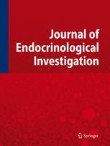|
Anapafseos 5 Agios Nikolaos 72100,Crete,Greece,00302841026182,00306932607174,alsfakia@gmail.com
Blog Archive
- ► 2022 (3010)
- ► 2021 (9899)
-
▼
2020
(4138)
-
▼
October
(532)
-
▼
Oct 30
(99)
- Prognostic value of the 8th edition American Joint...
- Maximum isometric tongue force in patients with ob...
- Static and dynamic otolith reflex function in peop...
- Combination of copanlisib with cetuximab improves ...
- A novel format for recombinant antibody-interleuki...
- Evaluation of cancer-derived myocardial impairment...
- Melatonin increases overall survival of prostate c...
- Efavirenz induces DNA damage response pathway in l...
- A Comprehensive Review on DNA Gyrase Inhibitors.
- Unraveling Pathophysiological Mechanisms of Parkin...
- Current Practices in Endotracheal Tube Size Select...
- Transcutaneous CO2 Monitoring in Children Undergoi...
- Immediate Intraoperative Repair of the Recurrent L...
- Evaluation of adjuvant vaginal vault brachytherapy...
- Vertebral compression fracture during stereotactic...
- Postoperative radiotherapy after flap reconstructi...
- AuDacity 2020 Highlight: Using the COM-B Model to ...
- Singular Hearing Announces Early Release of HeardT...
- A retrospective survey of Chlamydia pneumoniae inf...
- Association of lower extremity function with nutri...
- Early invasive strategy for non-ST elevation acute...
- Therapeutic effect of concentrated growth factor p...
- Opioid-free anesthesia with a mixture of dexmedeto...
- Healing effects of a protein scaffold loaded with ...
- Efficacy and safety of rituximab for minors with i...
- Budd–Chiari syndrome as a complication of eosinoph...
- A rare anaesthetic challenge in a one-lung ventila...
- Long-term response to second-line afatinib treatme...
- Serum microRNA-365 suppresses non-small-cell lung ...
- Minimally invasive esthetic management of dental f...
- Effect of gonadotropins and endometrial thickness ...
- Dose‐escalation study of vemurafenib with sorafeni...
- Comparative efficacy of chemoimmunotherapy versus ...
- Post‐transplantation cyclophosphamide versus antit...
- Decision support for men with prostate cancer: Con...
- 'Anticancer Res'[jour]; +67 new citations
- Therapeutic potential for clomiphene, a selective ...
- Potential treatment of keloid pathogenesis with fo...
- Zinc Deficiency–Associated Dermatitis
- Prognostic value of PD-L1 expression in patients w...
- A nomogram based on pretreatment CT radiomics feat...
- Clinical characteristics and rate of dilatation in...
- A long noncoding RNA antisense to ICAM-1 is involv...
- A look into the link between centrosome amplificat...
- Targeted therapies for RET-fusion cancer: Dilemmas...
- Jervine exhibits anticancer effects on nasopharyng...
- Xiaoyaosan slows cancer progression and ameliorate...
- Co-delivery of doxorubicin, docosahexaenoic acid, ...
- Biochemical and histomorphological changes in test...
- Puerarin improves the bone micro-environment to in...
- Kanglexin accelerates diabetic wound healing by pr...
- Aspirin modified strontium-doped β-tricalcium phos...
- The hypothalamic–pituitary–adrenal and -thyroid ax...
- Right-Sided Congenital Diaphragmatic Hernia Caused...
- Correlation between Blood and CSF Compartment Cyto...
- High level of CD10 expression is associated with p...
- Immediate dental and skeletal influence of distrac...
- Comparison of three different types of splints and...
- Endoscopic Management of Primary Acquired Choleste...
- Acute handlebar syndrome: Two extremes of a challe...
- Tophaceous gout in thoracic spine mimicking mening...
- Pediatric pathology all grown up – An interesting ...
- Apert syndrome: Cranial procedures and brain malfo...
- Laser interstitial thermal therapy as an adjunct t...
- Functional status of surgically treated pineal cys...
- Nerves transfers for functional hand recovery in t...
- Parte I: Anatomía microquirúrgica tridimensional d...
- Development of a protocol for assessment of suicid...
- Adjuvant management of locally advanced oral squam...
- Challenges and outcomes in establishing a sentinel...
- Signs and Symptoms of Ocular Surface Disease: The ...
- Solitary Plasmacytoma of the Frontal Bone.
- Effects of HER family-targeting tyrosine kinase in...
- Mutational Landscape and Tumor Burden Assessed by ...
- The Changing Landscape of Therapeutic Cancer Vacci...
- Early Response to First-Line Anti-PD-1 Treatment i...
- Gadolinium-Enhanced 3D T1-Weighted Black-Blood MR ...
- Selection of Patients for Treatment of Brain Arter...
- Radioanatomic Characteristics of the Posteromedial...
- Risk Factors for Early Brain AVM Rupture: Cohort S...
- Longitudinal Assessment of Neuroradiologic Feature...
- Considerations for Antiplatelet Management of Caro...
- Clinical and Radiologic Findings of Acute Necrotiz...
- Brain MR Spectroscopic Findings in 3 Consecutive P...
- Perinatal Arterial Ischemic Stroke in Fetal Vascul...
- Modified technique of free composite osteocutaneou...
- High-Resolution Gadolinium-Enhanced MR Cisternogra...
- Characteristic Cochlear Hypoplasia in Patients wit...
- Treatment of Ruptured Blister-Like Aneurysms with ...
- Color-Coded Quantitative DSA of Brain AVMs
- Quantitative T1{rho} MRI of the Head and Neck Disc...
- Decubitus CT Myelography for CSF-Venous Fistulas: ...
- Parte I: Anatomía microquirúrgica tridimensional d...
- Treatment of Epilepsy Associated with Periventricu...
- Photosensitizer delivery by fibrin glue: potential...
- Using rapid point-of-care tests to inform antibiot...
- The contribution of HIV point-of-care tests in ear...
- Positive rotavirus samples
- Antimicrobial resistance point-of-care testing for...
-
▼
Oct 30
(99)
-
▼
October
(532)
- ► 2019 (2429)
Αλέξανδρος Γ. Σφακιανάκης
Friday, October 30, 2020
The hypothalamic–pituitary–adrenal and -thyroid axes activation lasting one year after an earthquake swarm: results from a big data analysis
Subscribe to:
Post Comments (Atom)



No comments:
Post a Comment